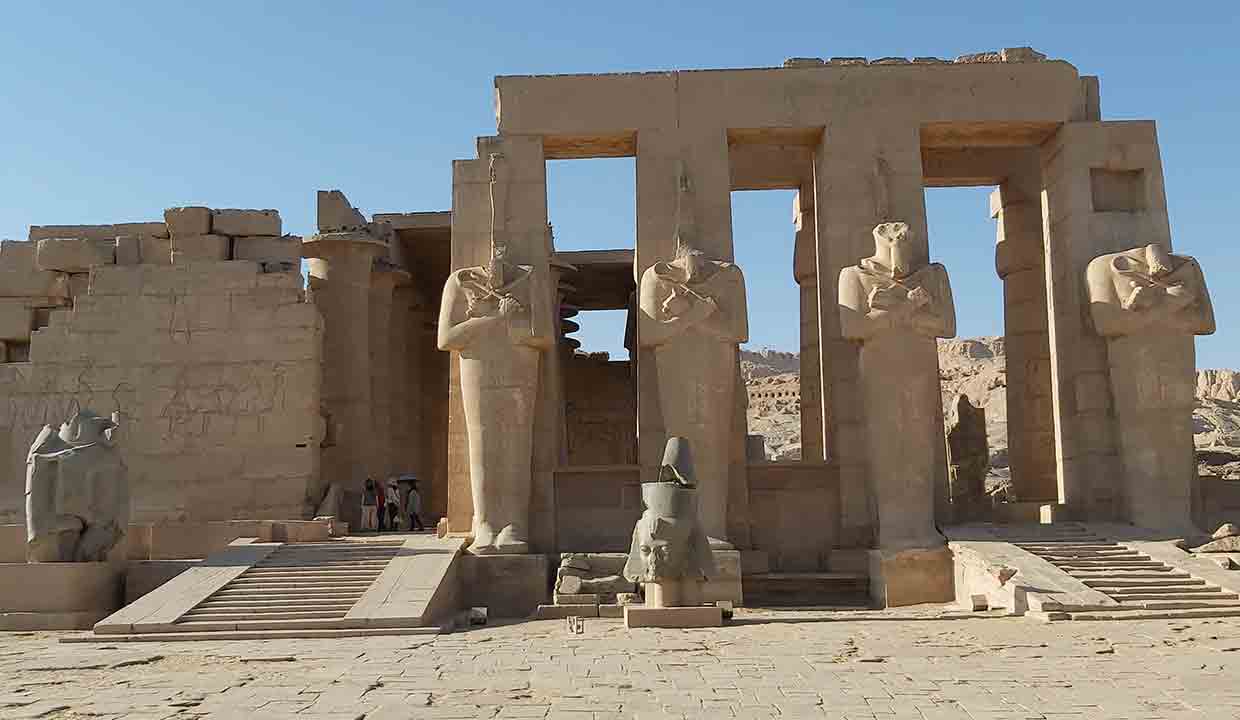Step into ancient Egypt at the Ramesseum—the grand temple dedicated to Pharaoh Ramesses II. A Luxor gem that’s not to be missed!
Introduction
Nestled in the Theban Necropolis in Upper Egypt, the Ramesseum stands as an enduring monument to one of ancient Egypt’s most celebrated pharaohs—Ramesses II. Located on the western bank of the River Nile, this memorial temple offers a fascinating window into the ruler’s life and accomplishments, as well as the religious and architectural practices of the time. Here, across from the modern city of Luxor, history and the present intersect in a complex tapestry.
Historical Background
Ramesses II, often referred to as Ramesses the Great, reigned during the 19th Dynasty, around 1279-1213 BC. He was a formidable military leader, prolific builder, and a key figure in the development of ancient Egypt’s infrastructure. The Ramesseum was intended to be both a tribute to him and a place of worship for the gods.
Architectural Marvel
The architectural layout of the Ramesseum is a showcase of ancient Egyptian artistry and engineering. Its intricate design features colossal statues, expansive courtyards, and intricate carvings that recount military campaigns and offer praise to the gods. One of the most noteworthy elements is a 62-foot statue of Ramesses II, originally estimated to weigh over 1,000 tons. Though it has since fallen and broken, its sheer size and detail remain awe-inspiring.
Religious Significance
The temple was not just an exercise in ego or grandeur; it had profound religious significance. It was dedicated to the Theban triad of gods—Amun, Mut, and Khonsu—and served as a ritualistic center where offerings and ceremonies took place. The extensive wall carvings provide insights into the religious rites and cosmologies of ancient Egypt.
The Osirid Statues
One of the unique features of the Ramesseum is its Osirid statues. These figures are designed to resemble the pharaoh as Osiris, the god of the afterlife, and they line the second courtyard. They serve both as an ideological statement and as a testament to Ramesses II’s perceived divinity.
Tourism and Preservation
Today, the Ramesseum is a UNESCO World Heritage site and a major attraction for tourists exploring Egypt’s rich history. Ongoing conservation efforts are in place to preserve this historic gem. Whether you’re an avid history buff or a casual traveler, the temple offers an enriching, educational experience.
Conclusion
A visit to the Ramesseum is like stepping into a time machine set for ancient Egypt. The temple complex offers a comprehensive look into the life of Pharaoh Ramesses II and serves as a stunning example of ancient Egyptian art, religion, and architecture. As you wander through its ruins, each stone whispers tales of valor, each carving unveils mysteries, and each statue stands as a sentinel to a civilization long past but never forgotten.
Opinion: The Ramesseum is a spectacular site that encapsulates the essence of ancient Egyptian civilization. Its intricate architecture and rich history make it an invaluable asset for both Egypt and the world. It stands as a reminder that even in antiquity, humans were capable of creating structures of immense complexity and beauty.
